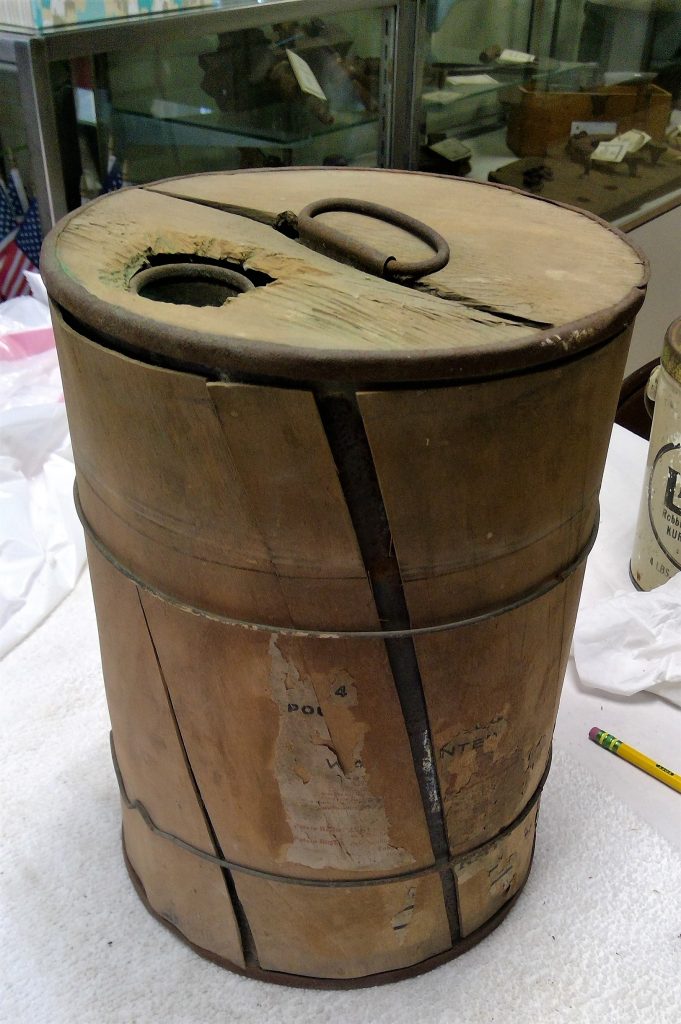Object Spotlight: Paris Green
Museums often advertise white glove tours. These special tours provide guests with opportunities to touch museum artifacts. The cotton gloves protect the artifacts from oils and fingerprints and protect the wearer from any harmful substances that might be found on the artifacts.
At the Plymouth History Museum, we wear blue nitrile gloves to protect ourselves and our artifacts from harm. These gloves came in handy the other day when we came across a seemingly harmless keg.

It was clear that the keg in question was old. Made from wood and metal, it contained something green. We immediately recognized this green substance as copper, but what on earth was it used for? Unfortunately, the label was torn and faded.
Close inspection revealed a couple of words: “potato blight” and “potato beetle.” A quick Google search showed that copper sulfate was sometimes used to treat potato blight in the 19th century. But the fact that it was also used as a pesticide suggested this keg contained something I had only heard stories about: Paris Green. Another close look at the label revealed the words “PARIS GR…” and “POISON.”
Paris Green, or copper acetoarsenite, is a highly toxic powder that was commonly used in the 19th century as a pesticide and a pigment for paint, fabric dye, and fireworks. Working in art and textiles museums, I knew to be wary of anything from the 19th century colored a brilliant emerald green. But I was not prepared to find an entire keg of this deadly substance in its raw form.
This keg of Paris Green most likely came to the PHS collection from a local farm. It was used well into the 20th century to treat potatoes, apples, tobacco, and other crops. It was a deadly rodenticide; its name derived from its devastating effect on Parisian sewer rats. It was also used to eradicate mosquitoes.
Paris Green is also toxic to humans. Less than 1/8 teaspoon of arsenic constitutes a fatal dose! For this reason, PHS decided to deaccession this object from its collection. It will be turned over to the Department of Agriculture for proper disposal as a hazardous waste.